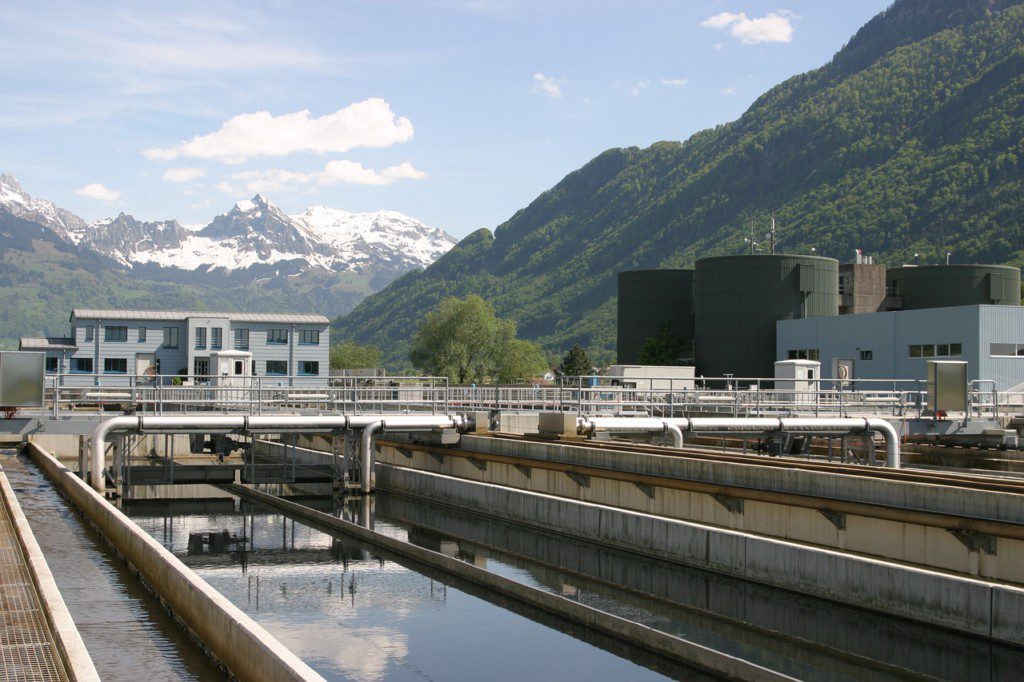Whether you work in a wastewater treatment facility or a food processing plant, water treatment is essential if you want to get rid of all of the accumulated contaminants. Different water treatments can be used when focusing on specific pollutants. For instance, a water softener can remove magnesium and calcium ions from hard water. One water treatment that you should be aware of is ozone disinfection, which was initially used as a water treatment back in the late 19th century.
Ozone is a relatively unstable gas that consists of three oxygen atoms. Because of how unstable this gas is, it quickly degrades to pure oxygen, which results in the creation of a free oxygen atom. This atom is extremely reactive and only lasts for a short period of time. Ozone is notable for having a pungent smell that’s similar to that of chlorine. It’s possible to smell ozone in the moments preceding a thunderstorm.
In many cases, ozone disinfection is considered to be more effective than chlorine disinfection. While chlorination is a great process for removing most contaminants from water, ozone disinfection is better at getting rid of viruses and bacteria that have entered the water. Because of the oxidizing properties that ozone has, this gas can lower the concentration of sulfur, iron, and manganese, which should significantly improve the taste of the water.
The insoluble particles that are formed during the ozone disinfection process can be removed with a post-filtration system. Any chemical or organic particles in the water can be eliminated with chemical oxidation or coagulation. When using ozone for disinfection purposes, keep in mind that the gas will degrade within 10 seconds to upwards of 30 minutes. It’s important to understand that the rate of degradation depends on water temperature, water chemistry, and pH levels. This article offers a comprehensive look at ozone disinfection and how it can treat contaminated water.
How Does Ozone Work to Fight Infection?
Oxygen is able to form into the unstable ozone gas by using a set amount of energy. It’s possible to convert oxygen into ozone via a standard electric discharge field. This field can be created with two separate systems, which include a CD-type ozone generator and a UV-type ozone generator. A CD-type generator involves a corona discharge that simulates lightning. On the other hand, a UV-type generator works by simulating the ultraviolet rays that come from the sun.
While the two aforementioned methods are the most commonly used techniques for creating ozone, it’s also possible to make this gas via chemical and electrolytic reactions. When you start using an ozonation system of any kind, clean and dry air will be passed through an electric discharge that’s been set to a high voltage. The corona discharge method can make an ozone concentration that measures at 10,000 mg/l. If you’re looking to treat a small amount of wastewater, the UV ozonation method may be the right one for you.
On the other hand, it’s highly recommended that you opt for the corona discharge technique when using a large-scale system. Make sure that you pick up some ozone test strips before performing this process. These strips can be placed in the water to help you determine what the exact ozone concentration is. The water is then taken through a venturi tube to create a vacuum. This vacuum will pull the ozone that you’ve made into the water, which should begin the disinfection process.
It’s also possible that the air will bubble up and into the water to begin treatment. At this stage of the process, the ozone reacts with any metals in the water to create metal oxides that are unable to be dissolved, which means that post filtration must be used to get rid of the metal oxides. Once you’ve completed the post-filtration process, your water should be completely disinfected.
Keep in mind that ozone disinfection is considered to be entirely safe and effective. Since ozone gas only lasts for a short period of time before degrading, it leaves no residue. The safety of this disinfection technique means that it can easily be used in homes, hospitals, and industrial facilities. Along with getting rid of viruses and bacteria, ozone disinfection can eliminate bad odors in your water. All organic matter, manganese, and iron in the water can also be destroyed with an ozone disinfection system.
There are a couple of features that you should look for when attempting to select the best ozone disinfection system. You may want to select a system that offers real-time monitoring for the ozone levels in the water that’s being disinfected. By monitoring how much ozone is in the water, you can determine if your ozone disinfection system is effective. Because of how quickly ozone dissolves, real-time monitoring is the only way for you to identify if the water was exposed to enough ozone.
Along with real-time monitoring functionality, you’ll also want to obtain some kind of post-filtration system. Many reverse osmosis systems come with a second filter that’s able to get rid of any leftover contaminants. The ozone disinfection system that you select should also be outfitted with an additional filter that’s specifically designed to remove any metal oxides from the water.
Benefits of Ozone Disinfection
Before you think about selecting an ozone disinfection system, it’s important that you read up on the numerous benefits of using this system for water treatment purposes. The primary benefits of ozone disinfection include:
- Potent disinfectant – The disinfection properties of this system are powerful and effective. These systems are able to get rid of nearly all contaminants that could be found in your water.
- Environmentally friendly – Since ozone reverts back to oxygen after a short period of time, the gas is environmentally friendly and can be used in large quantities without you needing to worry about how the gas will affect the environment.
- Strong oxidizing properties – Since ozone has strong oxidizing properties, you can be confident that it will eliminate the majority of microorganisms that are present in your water.
- Eliminates many contaminants – Along with microorganisms, ozone can eliminate germs, bacteria, and viruses.
- Prevents regrowth – Unlike chlorine and ultraviolet disinfection, ozone disinfection prevents the regrowth of various microorganisms.
- Has multi-purpose properties – Ozone can be used for the disinfection of air and water.
- Highly effective – Ozone is considered to be more effective than chlorine in getting rid of bacteria and viruses.
- Generated onsite – Ozone is generated onsite, which means that you can avoid the safety issues that occur when shipping the gas.
- Exceedingly versatile – Ozone disinfection systems are highly versatile and can be used in a variety of settings, which include everything from home settings to industrial settings.
- Decomposes quickly – Ozone can decompose in a matter of seconds, which means that harmful residues don’t remain in the water.
 Drawbacks of Ozone Disinfection
Drawbacks of Ozone Disinfection
While ozone disinfection provides users with many notable advantages over other water treatment systems, there are some drawbacks that come with this type of water treatment. Even though these drawbacks don’t outweigh the benefits, you may want to pick up another type of water treatment system depending on your needs. The main drawbacks of ozone disinfection include:
- Poor solubility – Ozone is considerably less soluble than chlorine when placed in water for disinfection purposes. As mentioned previously, ozone reacts with the metal to create metal oxides that will need to be removed with the post-filtration process.
- Can create toxicity and fire hazards – It’s possible for toxicity problems and fire hazards to develop as you generate ozone. The ozone generation process must be performed with care to ensure that these hazards don’t occur.
- Could require pre-treatment – In the event that the water you’re treating has high concentrations of magnesium and calcium, this indicates that the water is hard water. You may need to perform a pre-treatment technique to soften the water before it passes through an ozone disinfection system. Consider adding polyphosphate to the water to prevent carbonate scale from forming.
- Relatively high costs – The operational and equipment costs for ozone disinfection are relatively high when compared to other treatment methods. You might also find that it’s more difficult to locate professionals who are skilled in providing maintenance and repair services for ozone disinfection systems.
- Ozonation by-products are untested – Ozonation byproducts have yet to be extensively tested, which means that there’s a possibility that some of the byproducts could be carcinogenic. You can get rid of these byproducts by making sure that your ozone disinfection system is equipped with a activated carbon filter.
While there are some drawbacks to take into account before you select a water treatment system, ozone disinfection systems have many benefits that can’t be found with other treatment methods. Ozone disinfection systems can be used in any setting and have strong oxidizing properties, which ensures that most of the contaminants in your water are effectively removed.







